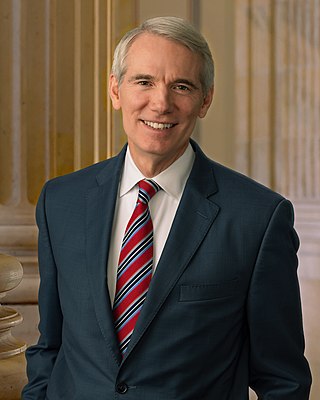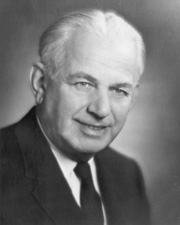
Since Hawaii became a state in 1959, it has sent congressional delegations to the United States Senate and United States House of Representatives. Each state elects two senators to serve for six years. Members of the House of Representatives are elected to two-year terms, one from each of Hawaii's congressional districts. Before becoming a state, the Territory of Hawaii elected a non-voting delegate at-large to Congress from 1900 to 1958.

The 7th United States Congress was a meeting of the legislative branch of the United States federal government, consisting of the United States Senate and the United States House of Representatives. It met in Washington, D.C. from March 4, 1801, to March 4, 1803, during the first two years of Thomas Jefferson's presidency. The apportionment of seats in the House of Representatives was based on the 1790 United States census. Both chambers had a Democratic-Republican majority, except when the Senate held a two-day Special Senate session in order to provide advice to the new President Thomas Jefferson, when there was still a Federalist majority in the Senate.

Robert Jones Portman is an American attorney and politician who served as a United States senator from Ohio from 2011 to 2023. A member of the Republican Party, Portman was the 35th director of the Office of Management and Budget (OMB) from 2006 to 2007, the 14th United States trade representative from 2005 to 2006, and a U.S. representative from 1993 to 2005, representing Ohio's 2nd district.
These are tables of congressional delegations from Virginia to the United States Senate and United States House of Representatives. Virginia's current U.S. Senators are Democrats Mark Warner and Tim Kaine. Virginia is allotted 11 seats in the U.S. House of Representatives; currently, 6 seats are held by Democrats and 5 seats are held by Republicans.

The 1952 United States Senate elections was an election for the United States Senate which coincided with the election of Dwight D. Eisenhower to the presidency by a large margin. The 32 Senate seats of Class 1 were contested in regular elections, and three special elections were held to fill vacancies. The Republicans took control of the Senate by managing to make a net gain of two seats. However, Wayne Morse (R-OR) became an independent forcing Republicans to rely on Vice President Richard Nixon's tie-breaking vote, although Republicans maintained a 48–47–1 plurality. Wayne Morse would caucus with the Republicans at the start of Congress’ second session on January 6, 1954 to allow the GOP to remain in control of the Senate. This was the third time, as well as second consecutive, in which a sitting Senate leader lost his seat.

James Glenn Beall was an American businessman and politician. A member of the Republican Party, he served as a U.S. Representative (1943–1953) and a U.S. Senator (1953–1965) from Maryland.

The 1992 United States Senate election in North Dakota was held on November 3, 1992, along with other elections to the United States Senate in other states as well as elections to the United States House of Representatives and various state and local elections. Incumbent Democratic-NPL U.S. Senator Kent Conrad retired, having given a pledge that he would not run for re-election if the federal budget deficit was higher than when he was first elected; however, when the other Senate seat became vacant, he ran in the special election and won. Democratic-NPL U.S. Congressman Byron Dorgan won the open seat.

The 4th United States Congress was a meeting of the legislative branch of the United States federal government, consisting of the United States Senate and the United States House of Representatives. It met at Congress Hall in Philadelphia, Pennsylvania, from March 4, 1795, to March 4, 1797, during the last two years of George Washington's presidency. The apportionment of seats in the House of Representatives was based on the 1790 United States census. The Senate had a Federalist majority, and the House had a Democratic-Republican majority.

Joe Biden, the 46th and current president of the United States, has run for public office several times, beginning in 1970. Biden served as the 47th vice president (2009–2017), and as a United States senator from Delaware (1973–2009). Biden is the oldest elected and serving president, the second Catholic president, after John F. Kennedy, and the first president from Delaware.

The 1972 United States elections were held on November 7, and elected the members of the 93rd United States Congress. The election took place during the later stages of the Vietnam War. The Republican Party won a landslide victory in the presidential election, and picked up seats in the House, but the Democratic Party easily retained control of Congress. This was the first election after the ratification of the 26th Amendment granted the right to vote to those aged 18–20.

The 1964 United States elections were held in the United States on November 3, 1964, to elect the President of the United States and members of the 89th United States Congress. The elections were held during the Civil Rights Movement and the escalation of the Vietnam War. President Lyndon B. Johnson defeated Senator Barry Goldwater of Arizona in the presidential election, and Johnson's Democratic Party added to their majorities in both chambers of Congress. This was the first presidential election after the ratification of the 23rd Amendment, which granted electoral votes to Washington, D.C.

The 1952 United States elections were held on November 4, 1952, during the Cold War and the Korean War. General of the Army Dwight D. Eisenhower won the White House in a landslide over Democratic governor Adlai Stevenson of Illinois. Meanwhile, Republicans narrowly took control of both chambers of Congress, giving Republicans their first trifecta since the Great Depression. This is the last election until 2000 in which the Republicans held both chambers of Congress and the presidency at the same time. For the rest of the century, Republicans would often still win the presidency without full control of Congress.

The 1992 congressional elections in New Hampshire were held on November 3, 1992. They determined who would represent the state of New Hampshire in the United States House of Representatives. Representatives are elected for two-year terms; those elected served in the 103rd Congress from January 1993 until January 1995. New Hampshire has two seats in the House, apportioned according to the 1990 United States census.

The 1940 United States Senate special election in Illinois took place on November 5, 1940. The election was triggered by the vacancy left by the death in office of Democrat J. Hamilton Lewis. After Lewis' death, James M. Slattery was appointed to fill the seat in the interim period until the individual elected in the special election would be sworn-in. Slattery was the Democratic Party's nominee in the special election. He was defeated by Republican nominee Charles W. Brooks. Brooks' father-in-law, Senator John Thomas of Idaho also won a special election that same day and the two would serve in the Senate together until Thomas' death in 1945.

The 2022 United States Senate election in Ohio was held on November 8, 2022, to elect a member of the United States Senate to represent the State of Ohio. Republican writer and venture capitalist JD Vance defeated Democratic U.S. Representative Tim Ryan to succeed retiring incumbent Republican Rob Portman.























